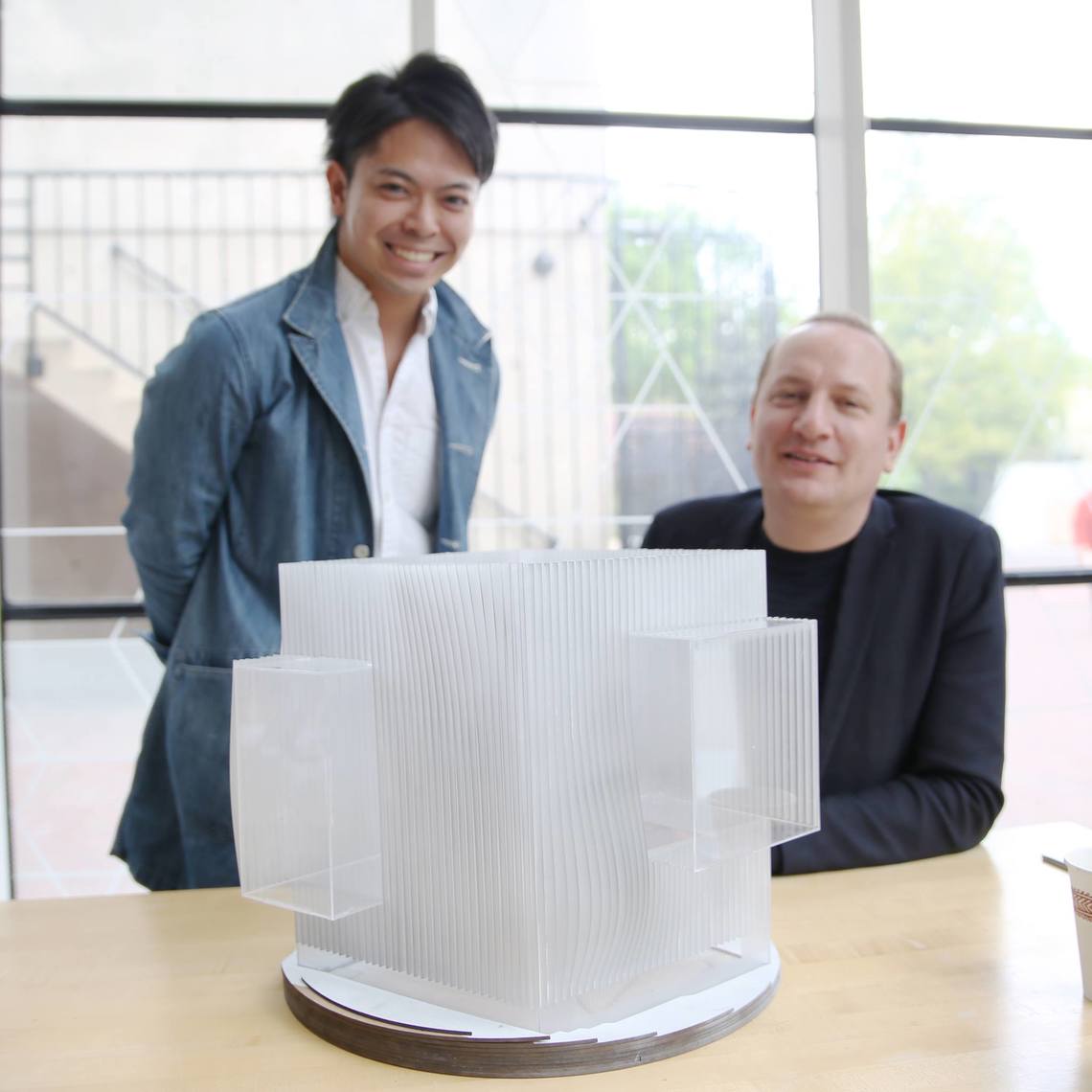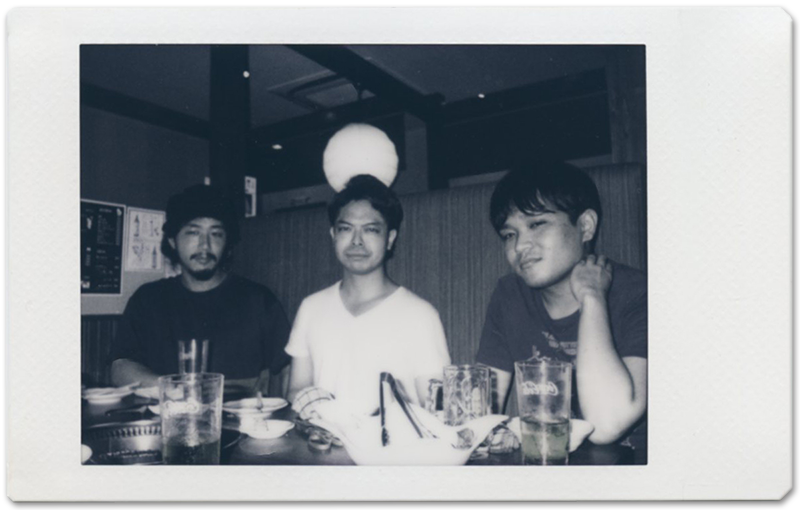My junior, Taro Kagami, graduated from Dentsu Inc. and is studying architecture again at a graduate school in the US. He says he wants to work in the future not at a typical design firm, but at a design thinking consulting firm.
I wrote about this in the 32nd installment of this series, dated May 29, 2014. Perhaps because I'm getting older, three years ago feels like yesterday, but this same Kakamigawa-san graduated from Harvard University's Graduate School of Design this year. There, while aspiring to "meta-thinking" – considering things at a higher level – the members of the "Meta-Meta Club," whose conversations become incoherent from drinking too much, gathered again after a long time. The celebratory feast had begun.
Yamada: So Harvard's architecture program is the "Graduate School of Design," huh? Is there something distinctive about the "design" taught here?
Kakami: They say the word "design" was imported into Japan twice. Once during the Meiji era, meaning "engineering," and again after the war, meaning "styling."
Nowadays, when people in Japan hear "design," they generally think of the latter—the realm of "appearance." But at Harvard, design actually referred to the former. So they didn't teach any graphical design "for conveying information" at all. Instead, they focused on the "design" of social systems, centered on three main fields: architecture, urban planning, and landscape.
Yamada: Come to think of it, in Kiyonori Kikutake's "Metabolism Theory," he discusses architectural design—meaning the design process—using the famous "ka·kata·katachi" (form·structure·shape). Honestly, some parts were too difficult for me to grasp.
Kakami: What left the strongest impression regarding "designing" social systems was the critique session during the very first week of my master's program. I presented my proposal proudly, just as I'd done in Japan, complete with a large architectural model, CG renderings, and diagrams illustrating my design intent. But the professors' very first comment completely floored me.
"The design is good. But who's going to pay for this?"
To put it bluntly, an architect's job can be divided into two parts: "raising money" and "designing and supervising the building." Yet Japanese architecture education completely ignores this monetization aspect, which makes up 50% of the job. As a result, I frequently see people who were astonishingly talented in university drafting assignments struggle to land work after graduation. They end up scraping by on small-scale projects.
In American architectural education, presentations are required that encompass the entire financial flow until the building is constructed, the quality of tenants, and the business sustainability of the activities conducted there. Notably, about 30% of urban planning professors also hold positions in public policy graduate schools. This revealed that the entire university understands how involving the government in fundraising significantly impacts urban design.
Thinking about it, it's obvious, but compared to Japanese design education, which often views discussing money as taboo, this was a very striking observation.
Yamada: Wow! I just wrote a column about public policy the other day. So, specifically, what kind of "assignments" are given in the lectures?
Kakami: Harvard's design assignments use a "studio-based education" model where each professor supervises about 15 students. Over roughly four months, this small group researches a single site, engages in heated discussions, and each student creates their own design. While some Japanese universities offer this type of education, the overwhelming difference is the presence of real clients.
For example, the sponsor for my final master's studio was NASA. The assignment was simply: "Design NASA's way of working 50 years from now." We students were invited to spend a week at JPL (Jet Propulsion Laboratory), NASA's research facility in Los Angeles. We began by discussing with researchers and analyzing their work methods.
Personally, I was fascinated by the budgets NASA had received from the government over the past few decades and their breakdown. I hypothesized that, fundamentally, NASA wouldn't be exploring space 50 years from now. This was because, given the current administration's budget allocations and societal trends, interest in preserving Earth's environment far outweighed interest in space exploration. I concluded that NASA would advance projects to expand humanity's habitable zones by applying technologies developed for survival in extreme environments (zero-gravity space, Mars, the Moon, etc.) to Earth's extreme regions (deep sea, deserts, Antarctica, etc.). Based on this, I designed a facility called XSXL (Extreme Situation Experimental Laboratory).
In Japan, professors typically assign limited design tasks like "design a museum" for arbitrarily designated sites. These often lack real clients or sponsors, focusing mainly on abstract conceptual discussions.
In America, however, professors do not specify what to design. The goal is to encourage students to proactively define the problem and determine what should be designed. This involves realistic thinking through research on actual clients. I believe this is why, after graduating, students develop the skills to create problems they need to solve and actively seek out potential clients.

At the Harvard Graduate School cafeteria. Professor Florian Aidenberg and Mr. Kagami surrounding the final model.
Yamada: That sounds incredibly hands-on. Mr. Kagami, you were a successful copywriter at Dentsu Inc., right? Did the way of thinking you developed back then prove useful?
Kagami: I wasn't exactly thriving (laughs). What I learned from seniors about copy and commercials was that planning involves two steps: "What to Say" and "How to Say." Unintentionally, design follows the same process, with entirely distinct phases: "What to Design" and "How to Design."
As mentioned earlier, at Harvard, where the emphasis is more on problem-posing than problem-solving, we spent a lot of time on "What to Design." This advertising planning mindset directly proved useful. The idea that choosing not to build something is also part of an architect's job is, I think, the spirit of what we call "orienter return" in the advertising industry.


Members of the Metameta Group
As Kagami-kun chatted about this and that, the Metameta Club members joined in, and before we knew it, it was late into the night. Working with these folks really is fun.
Please, help yourself!










